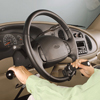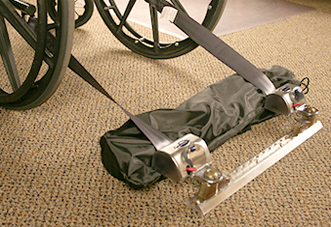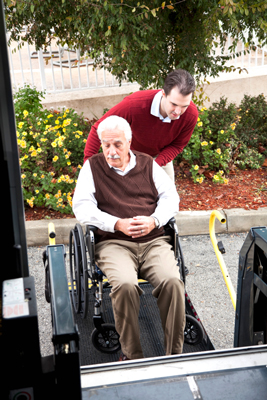Personalizing Your Adapted Van
When it comes to adapted vans, one “size” doesn't fit all. There are a number of things to consider, starting with your decision to drive or be a passenger. Wheelchair accessible vans are customized to suit your needs and lifestyle. If an adapted van is in your future, why not get familiar with some of the options and terminology now? It will be to your advantage when speaking with a mobility consultant at an online or local dealership. Here are the primary options for personalizing adapted vehicle.
Side Entry
The side entry accessible van has a ramp that deploys from the doorsill of the sliding side door of the van. Wheelchair van ramps can be powered or manually operated, and they can fold out or telescope from a just under the door. Side entries are preferred by people who want to drive the adapted van.
Rear Entry
The rear entry van is ideal for people who will not be driving the adapted vehicle, as well as people who will be parking their vehicle in a garage or non-accessible parking spaces. This adapted vehicle is also ADA compliant.
Hand Controls

Hand controls are available in many different arrangements. They allow the driver to operate the gas and brake system using levers that are attached to the steering wheel. People with a wide range of disabilities find hand controls beneficial.
Wheelchair Tie-Downs

Tie-downs are a legally necessary safety precaution used to keep the wheelchair user safe and secure. Depending on the type of wheelchair, you'll find tie-down options like manual tie-down straps, self-retracting Q'straint straps, and electric wheelchair docking systems.
Driving Aids

Driving aids are used to assist wheelchair users in operating their adapted van safely, and they can also be helpful on vehicles that are not accessible. Pedal extensions decrease the distance from your foot to the brake. The Handybar aids in getting in and out of any type of vehicle. A wireless back-up camera visually assists the driver while moving in reverse, it also sounds an alarm if the vehicle is too close to an object. Wireless sensors let the driver know when the vehicle is too close to an object when backing up or parking. An electric parking brake assists individuals who have trouble pulling the parking brake into place. The “power pull” is a device that helps a wheelchair navigate the ramp when entering and exiting a wheelchair van.
Platforms and Lifts

Platforms and lifts are ideal for caregivers and people who have some ambulatory capability. Lifts and platforms help lift and stow their wheelchair or scooter in the trunk of a car or back of a vehicle. Either choice is a economical, safe way to store mobility equipment for travel.
Transfer Seat
Transfer seats make the transfer from a wheelchair to a vehicle seat in a handicap van much less. These seats are excellent for the majority of wheelchair users who would like to drive their handicap accessible van from a safer, standard car seat rather than their wheelchair.
Jump Seat
Jump seats increase seating in wheelchair vans to accommodate larger families. The seats can be folded up when they are not in use to provide extra room. While these are your options for personalizing your adapted van, remember—all these options have options of their own. If you're in the market for a wheelchair accessible van, it can't hurt to know about all your options to make informed decisions. You'll enjoy the ride even more!


